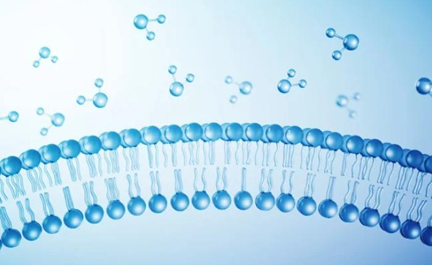What Factors Influence In Vitro Permeability Results?
In vitro permeability testing is crucial for understanding how drugs are absorbed in the body. This testing helps researchers predict oral bioavailability and drug absorption rates, playing a significant role in drug development. By assessing how drug compounds pass through cell membranes under controlled conditions, scientists can refine formulations to optimize therapeutic outcomes. However, the results can be influenced by various factors that can alter their interpretations. Identifying these factors is essential for improving the precision and reliability of in vitro assessments. Thus, an understanding of these parameters can significantly enhance drug discovery and development, making the process more efficient and cost-effective.

Purpose and Definition of In Vitro Permeability Testing
In vitro permeability testing serves as a predictive tool in pharmaceutical research. It aims to evaluate how easily a drug compound can penetrate biological membranes, simulating conditions within the human body. The primary purpose is to determine a drug’s absorption potential and bioavailability before moving to more advanced stages of development. Researchers typically perform these tests using cell cultures or artificial membranes that mimic the biological barrier properties of the human gastrointestinal tract. This method provides insight into the compound’s behavior, efficacy, and safety profiles. By assessing permeability early in the drug development process, potential obstacles to effective absorption can be identified and addressed, enhancing the drug’s effectiveness and reducing the likelihood of late-stage development failures. This strategic approach helps streamline the development timeline and reduce associated costs, fostering innovation in therapeutic interventions.
Key Factors Affecting In Vitro Permeability Results
Several factors influence in vitro permeability outcomes, including drug properties, biological models, experimental conditions, and transport mechanisms. These elements can significantly impact the accuracy and relevance of permeability data, making their careful consideration critical to obtaining meaningful results.
Physicochemical Properties of Drug Compounds
The physicochemical characteristics of drug compounds heavily influence their permeability. Attributes such as molecular size, lipophilicity, charge, and solubility play vital roles. Smaller, more lipophilic molecules generally traverse cell membranes more easily, enhancing permeability. Conversely, large or hydrophilic drugs face barriers in membrane penetration. These properties determine how a compound interacts with the lipid bilayer of cell membranes, affecting passive diffusion capabilities. Additionally, the pH-dependent ionization state influences the permeability; non-ionized forms often diffuse more readily than their ionized counterparts. Understanding these properties allows researchers to predict and modify the permeability of compounds effectively, guiding optimization during drug development. Such insights are critical for designing compounds that achieve desired absorption profiles while maintaining therapeutic efficacy.

Biological and Cellular Models Used
Selecting appropriate biological or cellular models is crucial for accurate in vitro permeability results. Various models—including Caco-2 cell monolayers, PAMPA, and intestinal tissues—offer distinct insights into drug permeability. Each model mimics different aspects of human biological barriers, presenting unique advantages and limitations. For instance, Caco-2 cells are widely used due to their ability to simulate human intestinal epithelium, providing reliable human absorption predictions. Alternatively, PAMPA assays offer simplicity and cost-effectiveness, suitable for initial high-throughput screenings. The choice of model impacts the physiological relevance of results, necessitating careful consideration to align with research objectives. Accurate modeling ensures more predictive results, facilitating efficient drug development by indicating potential absorption challenges early in the pipeline.
Experimental Conditions and Protocols
Experimental conditions significantly impact the outcomes of in vitro permeability tests. Factors such as pH, temperature, buffer composition, and incubation time must be standardized to ensure consistency and reliability across experiments. Variations in these conditions can lead to discrepancies in permeability results, affecting data interpretation and subsequent decision-making processes. Consistent methodologies allow for comparability of results, enabling researchers to build comprehensive datasets that accurately reflect a compound’s permeability characteristics. Additionally, the use of validated and robust protocols minimizes experimental error, enhancing the credibility of findings. Standardization efforts are essential for maximizing the reproducibility and translational value of in vitro assessments, guiding informed decisions in drug development.
Transport Mechanisms and Enzymatic Activity
Transport mechanisms and enzymatic activities are critical factors influencing in vitro permeability. Drug compounds often traverse cellular membranes through passive diffusion or active transport facilitated by specific membrane proteins such as transporters. Understanding these mechanisms is crucial, as they dictate how a compound interacts with cellular barriers, impacting absorption efficiency. Additionally, enzymatic activity within the cellular model can alter a drug’s metabolic stability, influencing permeability outcomes. Enzymes can transform drugs during the permeation process, potentially affecting their therapeutic profiles and bioavailability. Accounting for these factors allows for a more accurate representation of in vivo conditions, improving the predictive power of in vitro tests. Comprehensive assessments of these interactions provide valuable insights into drug behavior, guiding effective formulation strategies.
Role of In Vitro Permeability in Drug Development
In vitro permeability testing plays a pivotal role in drug development by offering early insights into a compound’s absorption potential. This step is fundamental in optimizing lead compounds before advancing to costly and time-consuming clinical trials. Understanding permeability behaviors enables researchers to predict the oral bioavailability of drugs, crucial for effective therapeutic action. By identifying compounds with favorable permeability characteristics early, researchers can focus resources on promising candidates, driving efficiency in drug pipelines. Furthermore, in vitro permeability data assist in refining formulation strategies, enhancing drug delivery systems to improve patient outcomes. This testing helps mitigate late-stage development failures, reducing financial risks and accelerating timelines. Overall, it represents a cornerstone in successful drug discovery, ensuring that only the most promising candidates progress to advanced development stages.
Conclusion
In vitro permeability testing is integral to the drug development process. Understanding the factors affecting test results is vital for accurate assessments of drug absorption potential. Drug properties, biological models, and experimental protocols all contribute to the permeability outcomes. By considering these factors, researchers can enhance the reliability and predictive power of their permeability study. This understanding drives the development of effective pharmaceutical formulations, ultimately improving therapeutic outcomes for patients. As drug development continues to evolve, mastering these aspects of in vitro permeability remains essential for successful innovation.







